An original thesis on space-time.
A JOURNEY INTO THE UNIVERSAL MATRIX
” Those with the courage to explore the weave and structure of the Cosmos, even where it differs profoundly from their wishes and prejudices, will penetrate its deepest mysteries. “
Carl Sagan (1934-1996)
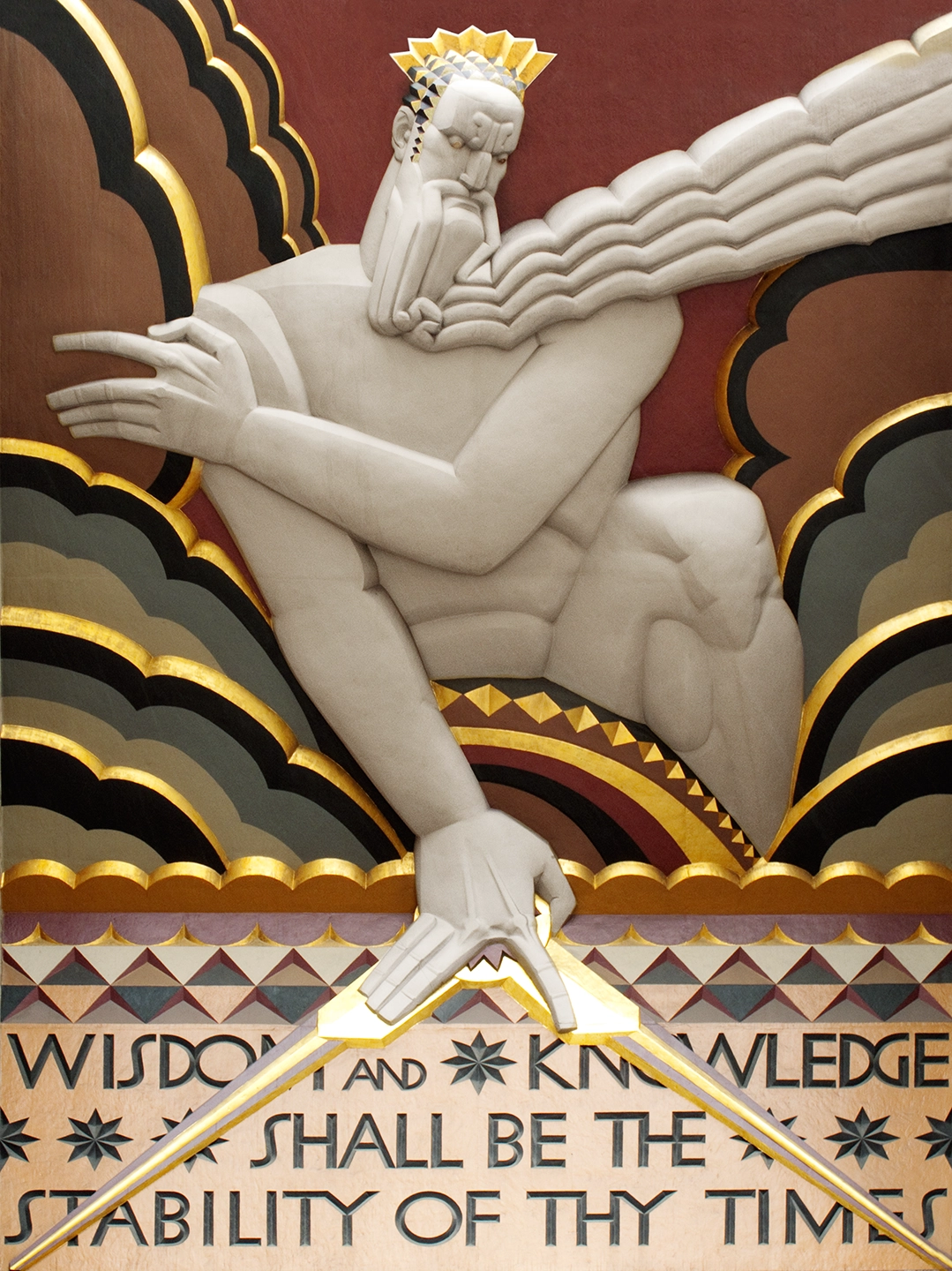
INTRODUCTION
Published
October 28, 2021
Pre-Scriptum: this text was originally written in French. Unfortunately,
when it comes to semantics, etymology, and homophony, no translation can
effectively preserve the original meaning. To remedy this, and to preserve the
explicit content, I have decided to keep the original French words and put
their English translations in brackets.
First
of all, I would like to make it clear that this thesis is not part of an
academic work, as many might automatically assume. If we follow the definition
of the word "thesis" given by the Larousse dictionary: « a theoretical proposition, an opinion, a
position on something whose veracity one strives to demonstrate, » my work can perfectly well bear this title
without receiving the recognition of the system or any "authority."
It is therefore with limitless freedom of thought, without concession, and,
above all, without having to answer to anyone, that we will be able to study,
from any and all angles, the subjects dear to the enthusiasm of a polymath.
Thanks to this mindset, original ideas were able to flourish, thrive, and
reveal themselves outside of the plantation in which our curiosity is usually
confined. To be invigorated by such openness is a blessing, and I would like,
without any shame, to share with you the rose of its quintessence.
•••••
The
genesis of this thesis dates back to the day I turned my eyes to the sky, or
rather, to the night when I became aware that the starry vault turned
inexorably around a fixed point, like a wheel around an axle. While
contemplating this grand spectacle, I never would have believed that my naive
reflections on the workings of the cosmos would lead me to study a plethora of
disciplines, linking astronomy to the – seemingly immobile – spheres of
mineralogy.
I
initially turned to academic science, and despite compelling discoveries in
certain fields like quantum physics, I found within it many theories and very
few theorems. Unlike a theorem, a theory is based on speculations: it is a
system formed by hypotheses that attempts to find cohesion among established
principles, be they philosophical or mathematical. In other words, a theory
does not define immutable rules and laws in reality. Indeed, contemporary
scientific dogma relies on complex theories that cannot be demonstrated outside
of a mathematical language teeming with equations. And since these equations
tend to feed into, intertwine with, and reflect each other in a closed circle,
this linguistic architecture is conducive to the wildest abstractions. The
lines of equations are certainly very impressive to the average person, but, as
René Guénon pointed out, they drift away from the
sensible reality they claim to explain.
As
"progress" advances, these equations inevitably form an artificial
body upon which scientists continue to build their work, without ever
questioning the actual solidity of its foundations. Theoretical science thus
compares to a Leaning Tower of Pisa – a structure that holds up admirably well,
yet threatens to collapse under the cumulative weight of its own aberrations
with each new advancement. And as surprising as it may seem, this explicit
observation nonetheless escapes the actors within the scientific community.
Currently, the most revealing example to contrast the synthetic complexity of
mathematics with the rationality of the biological environment is undoubtedly the
String theory. Confronted with this kind of absurdities, a question then
arises: why do we continue to expend so much time, energy, and money studying
realms that have no reciprocity with the metrology of terrestrial life?
Before
turning its attention to realms invisible to the naked eye – be it the
infinitely large with astrophysics or the infinitely small with particle
physics – perhaps the scientific elite would gain in authenticity if it devoted
more time to pondering the manifestations of nature's laws with the seriousness
they deserve. It is paradoxical, after all, that on the dawn of the 21st
century, the nature of life remains one of the deepest enigmas within a
community that boasts of understanding the origins of our cosmos and constantly
pushing its boundaries. Perhaps this "elite" should lower its
ambitions and focus more on the essential: the cause (or causes?) of life
deserve far more attention than its effects. By seeking to impress us with
conceptual abstractions that, in the absolute, rest on nothing concrete, the
prestidigitators of universities mask their incompetence and their gaps in
understanding the elementary principle(s) of observable reality, dazzling their
audience –their students and science-fiction enthusiasts – with a sleight of
hand that is undoubtedly fascinating.
The day
academics distance themselves from a theoretical science that leads nowhere,
perhaps the great enigmas of nature will finally be reconsidered in their
lecture halls. When that day comes, science will once again be in symbiosis
with the fundamentals of universal physics. We could begin, for example, by
taking an interest in the influence of lunar radiation on the perpendicular
growth of a plant, or the polarized and analogous relationship between the
bronchi of a lung and the branches of a tree: the former is sheltered from
sunlight, inhales oxygen and exhales carbon dioxide, while the latter absorbs
carbon dioxide and releases oxygen under the direct influence of the Sun.

At the beginning
of the 20th century, Nikola Tesla (1856-1943)
– the visionary of invisible physics – had already warned us about the
misleading tendencies he perceived in theoretical science (embodied in his time
by Albert Einstein) in the American newspaper The New York Times in 1931: « Einstein's work on relativity is a
magnificent mathematical disguise which fascinates, dazzles, and makes people
blind to the underlying errors. The theory is like a beggar clothed in purple
whom the ignorant take for a king... Its exponents are brilliant men, but they
are metaphysicists rather than scientists. » Indeed, the case of Albert Einstein is more than
symptomatic in revealing the intellectual stagnation in which we are immersed.
By "borrowing" the main tenets of his theory of general relativity
from the French physicist Henri Poincaré (1854-1912),
we take very little risk in asserting that the renown of this transgenerational
science icon stems more from social engineering than from authentic genius.
Having a plagiarist as an adored reference point is a telling sign of the times,
revealing the level of respectability these institutions truly deserve.
The lies are not limited to the honesty and
morality of the pillars of our society; they also extend to the technology we
use daily. At a time when electromagnetic waves connect all the inhabitants of
the Earth, the anachronism between the engineering of a mobile phone and that
of the internal combustion engine, whose basic technology is about one hundred
and seventy years old, is more than laughable. This raises a question to be
pondered in all sincerity: are the "scientific" works elevated to the
heights by the system the only ones that do not threaten its hegemony and the
prosperity of its economic model? The question at least deserves to be
explored...
So be warned: if you wish to obtain a degree
from a prestigious university and build a career, it is best to avoid certain
topics. Directing your research outside the framework imposed by
state-sanctioned conformity, especially when it challenges the theories of the
unassailable gods of the scientific pantheon, is a mistake not to be made.
Despite the evident dead ends, it is now unthinkable to question the structural
beliefs of the scientific Church. Refusing to bow before its idols would sign
your excommunication, and the loss of your credibility and respectability.
Since I have nothing to lose, to gain, or
even to prove, it is easier for me to highlight the frivolity of
"extraterrestrial" physics concerning the primary focus of this
study: the revolutions of celestial bodies above our heads. Although
astrophysicists remain light-years away from uncovering the underlying
mechanics of these revolutions, they stubbornly persist, anchored in the dogma
of their education, in attempting to explain this phenomenon through Isaac Newton's
(1642-1726) universal law of gravitation.
While the equation of this theory allows for the quantification of parameters
for an object's fall on earth and provides a mathematical solution to explain
the balance between two celestial bodies, it absolutely does not specify the
cause of their movement, let alone its regularity. Since the former president of the Royal Society pronounced
his law of gravity, no member of the establishment has sought to expand – with
the applied seriousness worthy of the scientific method – upon the cause of the
rotational force (denoted by f in the
illustration below, where the moon's orbital path around the earth's center is
taken as an example). This force, to use common nomenclature, is never taken
into account: that is precisely where the problem lies.
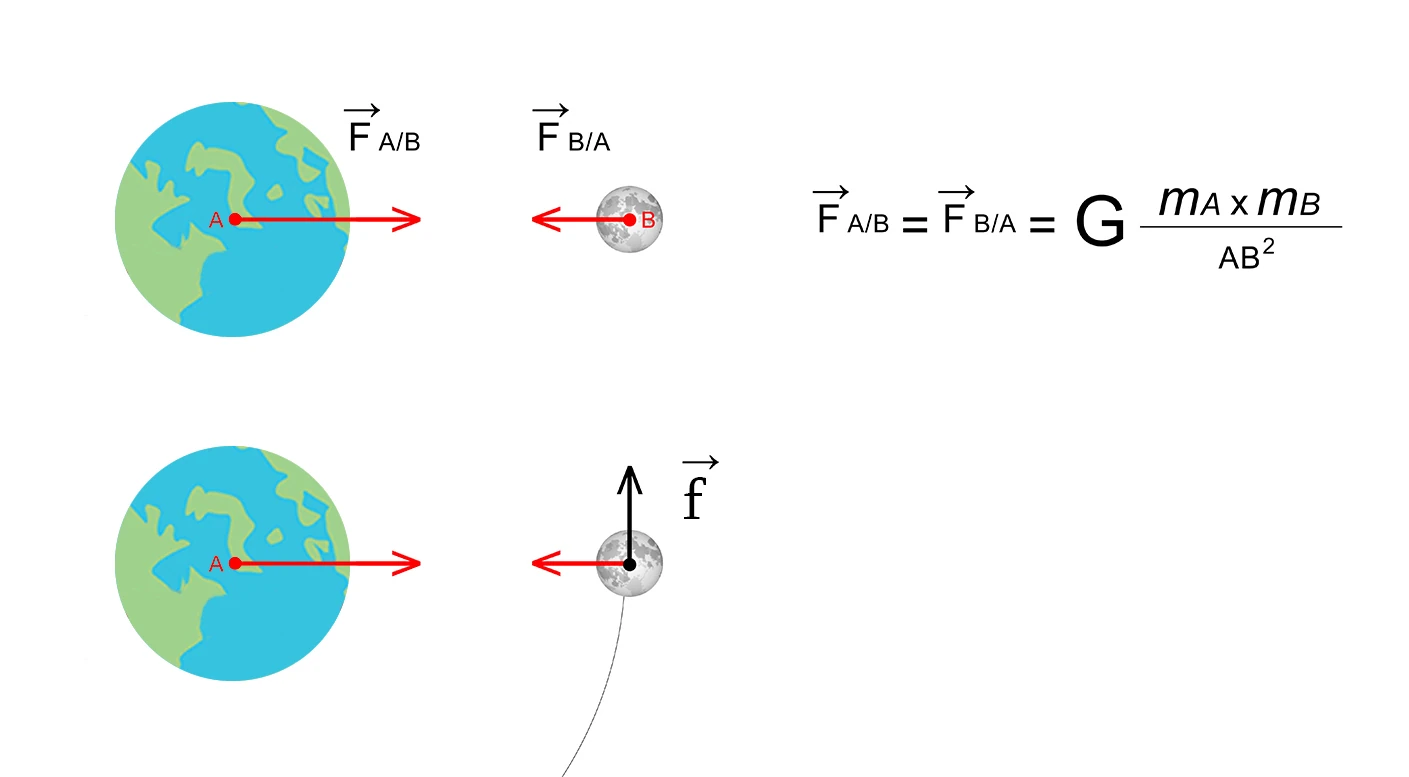
If no element of explanation for the origin
of force f can be
formulated, then gravity cannot be validated as it is presented by contemporary
cosmology. Furthermore, let us not forget that no device can detect it and no
scientist can reproduce its field in a laboratory. Of all the fundamental
interactions, and because it is the one that most eludes our understanding,
this so-called force of cohesion remains one of the most profound mysteries in
physics today. Consequently, we must not be afraid to acknowledge that the lack
of scientific rigor surrounding this concept is not reassuring regarding the
quality of the expertise and weakens the pillars upon which its reputation
rests. Nevertheless, speculations, each more implausible than the last,
continue to assert themselves on the scientific stage. But in truth, from the
theory of spacetime curvature to the hypothetical subatomic particles of the
quantum world called gravitons, we have not advanced one iota. Why?
Simply because the origin of this natural phenomenon remains utterly
inscrutable to the science of our peers. Physicists still content themselves
with explaining that the kinetics of celestial bodies is a remnant of a
hypothetical explosion at the origin of our universe – the dubious "Big
Bang"– presented to the world by the Jesuit Georges Lemaître
in the early 20th century.
Newtonian gravity poses another problem: the
unification of quantum mechanics and the theory of general relativity. If
gravity cannot be removed from the equation, we must acknowledge that
theoretical physics is once again colliding with the boundaries of its own
extravagances.
Once we have accepted the fact that certain
theories are currently taught as truths, it becomes easier to admit that
science has lost the heart of its intrinsic beauty. Its glorious hours, which
built its reputation, are now behind it, and the torches that once
distinguished it from religion now emit a feeble light. Richard Feynman (1918-1988), Nobel Prize in Physics
winner in 1965 for his work on the development of quantum electrodynamics, had
no problem admitting that: « Science is
the belief in the ignorance of experts. »
Even if
the standard model of astrophysics appears self-satisfied, our understanding of
the universe remains juvenile, incorrect, and clumsily patched together.
Humanity will never emancipate itself from its cosmic Stone Age if we
stubbornly insist on building ever higher on the foundations of a
"science" that has demonstrated its limits and belongs more to the
realm of fantasy than to empirical theorem. It is a fact: science has sunk into
doctrinal systems from which it struggles to exorcise itself. And the academic
gatekeepers, haloed in displayed vanity, never miss an opportunity to ridicule
anything that does not originate from their field of possibilities. Such a
mentality can never initiate the paradigm shift the scientific world needs to
evolve. The day our approach merges with the principles at the source of
creation, perhaps nature will once again reveal to us the inner workings used
by the regulator of its magnificent clock.
•••••
Despite
this consensus, annoying as it may be, we must be careful not to fall into the
spotlight of extremism and dismiss all theories with a wave of the hand;
because some, stemming not from mathematics but from pure intelligence, are
worthy of interest. We are thinking particularly of the somewhat obscure
notions of dark energy and dark matter, which set the scientific community
abuzz following Edwin Hubble's observations in 1929. Since then, many
astrophysicists have come to believe that the expansion of our universe is
linked to a dynamic phenomenon, invisible and intrinsic to space itself.
Considered to be 96% empty (6), this
space would not be empty at all; it would be filled with an energetic essence,
indescribable in our tangible world, that would nonetheless interact with it.
The void would thus be full of a kinetic essence, more or less dense, that no
one can, for the moment, explain, measure, or reproduce. It is therefore not
impossible that behind the world accessible to human senses lies a continuum
whose existence we are entirely unaware of. And it is not David Bohm (1917-1992), one of the fathers of
quantum physics, who would contradict us, as he stated: « Space is not empty, it is full. The universe
is not separate from this cosmic sea of dark energy. »
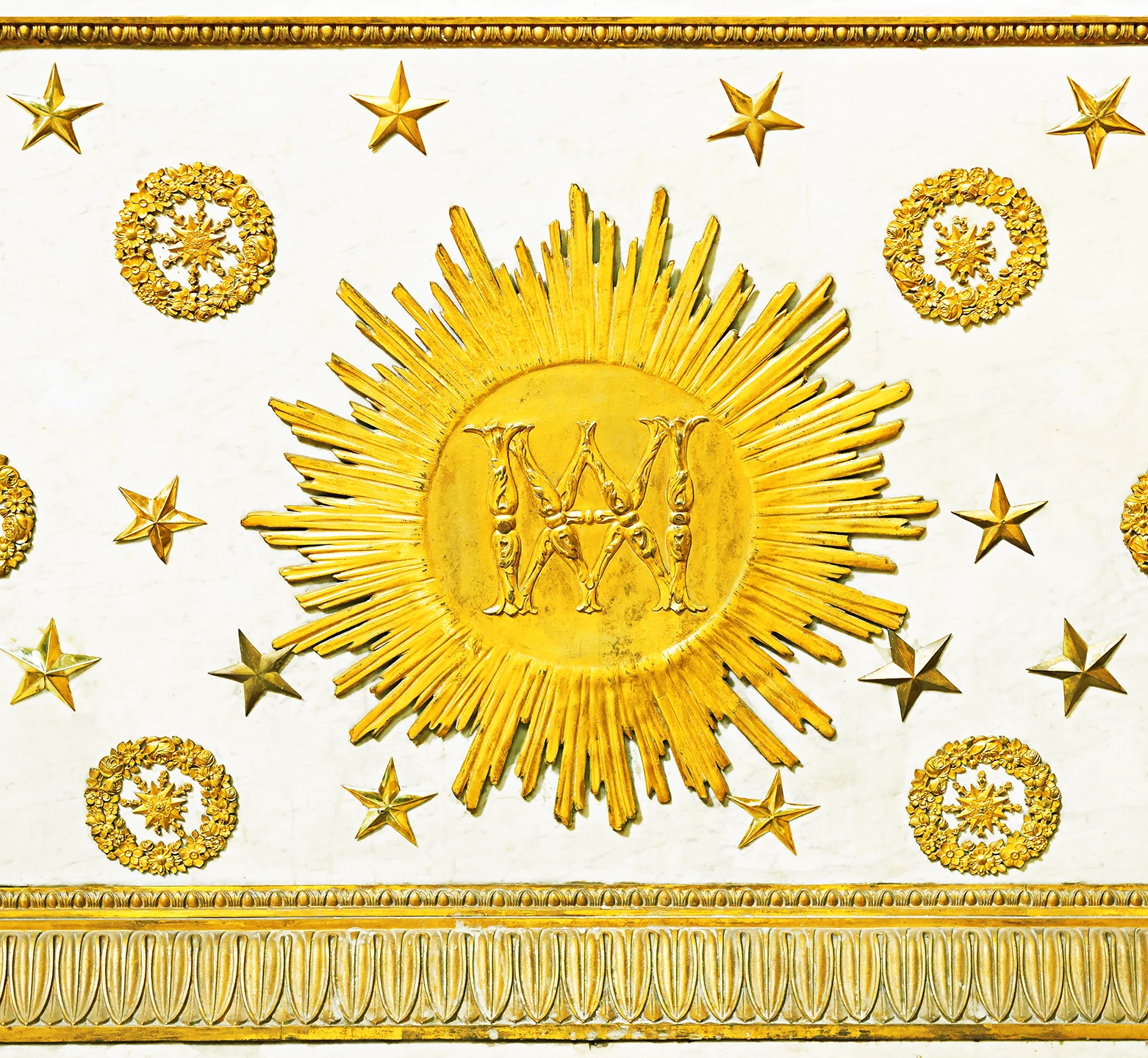
Looking
at mainstream cosmology, several fundamental questions about celestial
mechanics remain unanswered. Here, in my opinion, are the most pertinent ones:
· What causes the Earth to spin on its axis?
· What causes the Earth to orbit the Sun?
· What causes the solar system to orbit the
center of the galaxy?
· Why do the planets orbit the Sun on a common
plane?
· Why do the planets spin on their axes?
· Why can we predict the movement and position
of celestial bodies with such great precision over time?
· Why are the Earth, the Sun, and all the
planets spherical in shape?
· According to the law of action-reaction in
physics, what type of energy is consumed in the movement of celestial bodies?
· Is it possible that the circular motion of
our bright stars is a reaction to the action of this mysterious dark energy?
· Could the mysteries surrounding the mechanics
of universal gravity be the observable effects of an invisible cause within
dark energy?
I believe the answers lie at the very heart of this abstraction from the
material world called "dark energy." But, knowing that this realm is
invisible, unknown, and unexplored, how can we cross its threshold and
comprehend it? If modern science has reached its limits, where should we turn?
•••••
At the
age of 30 (3), I came across a book titled The Mystery of the
Cathedrals: The Esoteric Interpretation of the Hermetic Symbols of the Great
Work, written by Fulcanelli, the famous French adept. This work, a classic
and essential in the field of alchemy, was the spark that lite the fuse of my
research, because it provides very valuable keys for unlocking the doors to the
metaphysical kingdom of dark energy.
However,
access to these keys was concealed behind the artistic smokescreen of a
figurative, cryptographic, and cabalistic language. Despite my inability to
grasp the essence of this language, the mysterious spirit of this Art permeated
my mind from the very first paragraphs written by the master. This vibration
was not foreign to me; its aroma had already resonated very significantly,
naturally, and intuitively within my inner self since my earliest childhood. I
was far from imagining that this linguistic axiom – the Cabale – truly
existed outside the understanding of my secret garden. So that you may
understand what it is about, here is one of the best definitions of the Cabale
(from the Latin "cabbalus"): «
It is a hieroglyphic-like language, playing on all registers of expression:
images, words, letters, numbers, sounds, colors, shapes, weights, etc... as
well as on secret conventions, of which metaphor and emblematic rebuses are the
most common type. It has no proper or particular form and depends solely on the
culture and imagination of those who employ it. »
Today,
unfortunately, the only "Kabbale" known by
the atrophied Western culture and speculative Freemasonry appeared in the
Rabbinic tradition in 13th century Spain with the Zohar – the Book of
Splendors. Contrary to proselytizing consensus, "Kabbale"
or "Kabbalah," or even "Qabbalah"
– with the aim of serving a more effective mystification – is not an original,
isolated, and predominant current, but merely the reflection given by Jewish
mysticism to a tradition that preceded it. Furthermore, the word "Kabbale" is not of Hebrew origin, as its etymology
derives from the Greek "kabbalès".
This is why, in order to avoid the trap of homophony, to counter the nonsense
of popular culture, and to affirm the universality of its affiliation, scholars
prefer to use the term "Hermetic Cabale" (in honor of the Greek god
Hermes).
In any
case, whether it is "cabbalus" in
Latin or "kabbalès" in Greek, both terms
define the emblematic animal of knowledge since the highest antiquity: the
horse. Consequently, the semantic relationship between "cabaliste" (cabalist – a person who uses the Cabale)
and "cavalier" (horseman) becomes
utterly evident, coherent, and justified in light of initiatory tales, which
are very often chivalric, like those written by Chrétien de Troyes since the
first crusades and the discovery of oriental folklore. Indeed, from the heights
of the astronomical sympathies we share here down to Earth how can we not
contemplate the Knights of the Round Table, King Arthur, and the quest for the
Holy Grail – the chalice of chalices – from a perspective different from that
of the Hermetic prism? It is no coincidence ("hasard"
is a term of Persian origin, translated as "the hand of God") that
the hero's journey, always embodied by the adventures of a valiant horseman
(the expression of the Donum Dei), is so emblematic for a tradition that
dates back to the dawn of time: the mount of Pegasus was already being ridden
under the starry dome of the Chaldean-Egyptian priesthood.
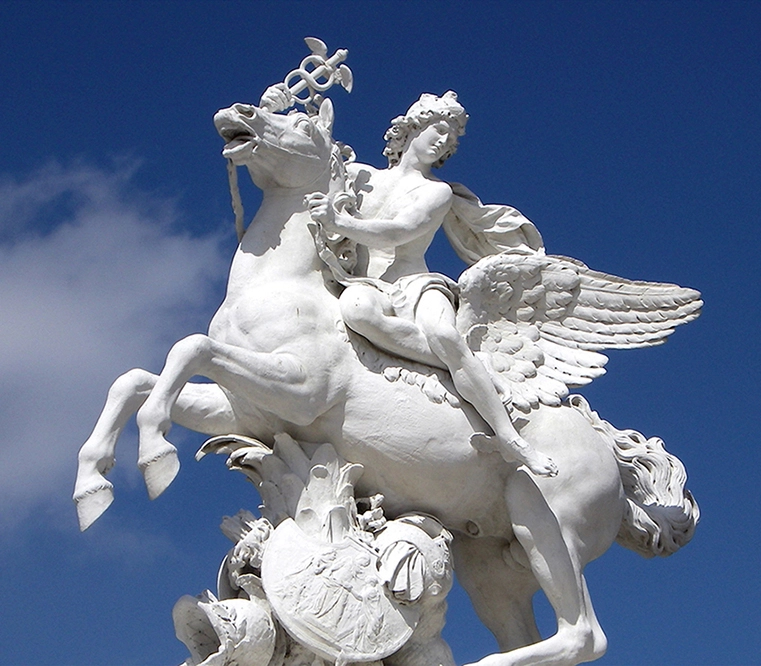
To understand how the spirit of Hermetic Cabale
functions, let us take a literary example with the word "occult"
(this choice is not insignificant, as it will distance your thoughts from the
association that vulgar culture makes with demonic practices). The structure of
this word breaks down into "o," "c," and "cult".
For a disciple of Hermes, the "o" is the hieroglyphic sign of the
Sun, and "c", in its curvature, that of the Moon; consequently,
"occult" emphasizes the cult dedicated to these two luminaries. From
an operative standpoint, this reading resonates with the definition given by
the Larousse dictionary: « That which
acts, or is done in a secret way, whose purposes remain unknown, hidden: an
occult influence ».
Before the universality of Hermetic Cabale
was led astray by the Qabbalah, and before the School
of Fine Arts feigned amnesia, all Artists (worthy of that capital A) used it in
their works to perfect beauty in its most arcane forms until the end of the
19th century. When I fully realized that these aesthetes used their creations
as an initiatory canvas, my feet didn't touch the ground for several days. This
epiphany bordered on enlightment.
Indeed, the implications of such a practice
for my relationship with Art, both in interpreting its concepts and in the
exegesis of culture in general, constituted an unprecedented revelation in my
life. For I could never have imagined that my natural predisposition for
finding analogies between things which, a priori, had none, would one
day reveal itself to be one of my greatest assets in my quest for the absolute.
What I had always taken for a curse – a psychological pathology – now appeared
to me as a gift to be cultivated. A sign had been sent to me, and I received
its message with the utmost consideration: Hermeticism dwelled within me.
The whims of fate are decidedly more than
just romantic, for this ancestral tradition held the potential to be an
inexhaustible source of inspiration and to channel my most metaphysical
musings. I knew then, without a shadow of a doubt, that the gates to the
mysterious kingdom of the invisible were no longer sealed forever.
At the dawn of my 33rd (6) year,
from the sublunar world, I turned my gaze toward the rising Sun.
•••••
Before continuing, it seems important to me
to open a brief parenthesis in order to explain why Hermetic philosophy and its
operative applications – alchemy, magic, and astrology – are no longer
respected and valued as they were by the science of our ancestors.
Indeed, the mere mention of any one of them
is enough to trigger the sneers of our contemporaries. This mentality, however
disdainful, was spearheaded by a school of thought born in the 18th century,
which dared to shamelessly distort the meaning and use of the word
"philosophy". Let us be very clear on this subject: authentic
philosophy has nothing in common with the "philosophy" of the Age of
Enlightenment; the sociological, humanist, and naturalist speculations of the
latter were never the focus of interest for ancient philosophers such as
Zoroaster (c. 6th century BC),
Aristotle (384-322 BC), or
Confucius (551-479 BC). Unlike
the editors of the Encyclopedia and their Germanic counterparts, true
philosophers were driven by a sincere quest for spirituality, wisdom, and
truth.
Furthermore, why
not call their intellectual movement "la philosophie
de la Lumière" ("the philosophy of the Light") instead of "la philosophie des lumières"
("the
philosophy of lights" which is the true translation of "the philosophy of
enlightenment")? Putting the word
"light" in the plural marks a diabolical intention to fragment what
cannot be fragmented. Through this manipulation, seemingly innocuous, truth no
longer exists as such, but becomes falsely multiple and of variable geometry depending
on each individual's orientation. Therefore, let us not allow ourselves to be
blinded by the worldly hypocrisies of a certain bourgeoisie, and let us not
lose sight of the fact that the authentic definition of philosophy is, in its
etymological excellence, "the love of wisdom". Pythagoras (6th century BC) clarified: « I
am a philosopher, not someone who claims to possess wisdom, but a man who
strives for it. » Attributing a
revised architecture to words, in order to divert the power of their egregore
and destroy the traditional heritage of our past, is one of the perversities
that have been used and financed by a dominating "elite" to ensure
the permanence of their power.
Driven by the revolutionary impulse of the
Age of Enlightenment, wrongly attributed to the people by our history books,
society plunged into a frantic and deadly obscurantism. Everything connected to
the beliefs of the preceding culture had to disappear, be erased, forgotten,
and, symbolically, our majestic cathedrals were vandalized.
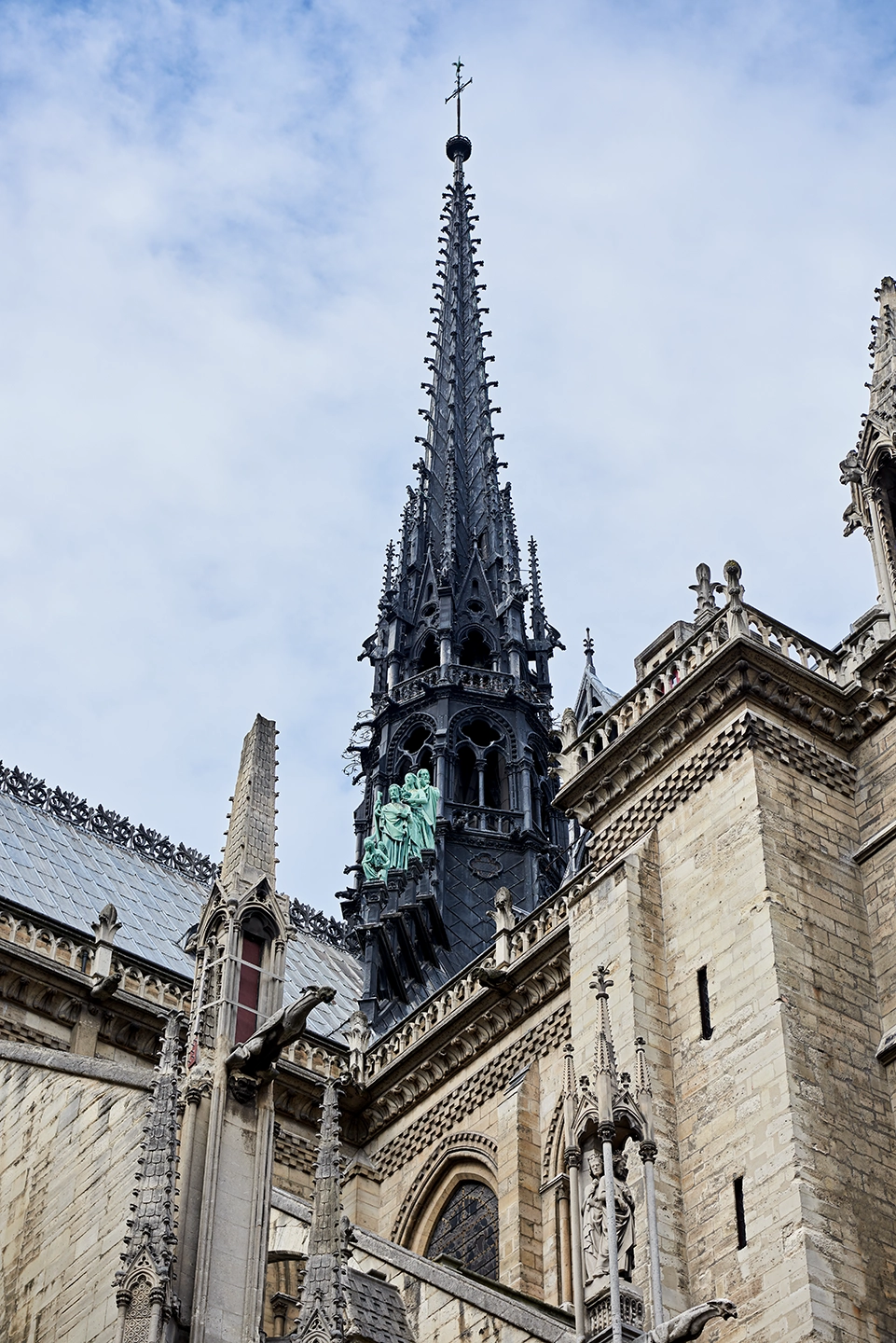
The Jacobin mentality, perfected by
fallacious initiations into which all sorts of arrivistes rushed, ultimately
delivered the coup de grâce with the abject
idea that man could henceforth be considered the equal of God. This kind of
doctrine is a blasphemy in light of Chapter 6, Verse 19, of the First Epistle
to the Corinthians (a book of the New Testament), written by the Apostle Paul: « Do
you not know that your bodies are temples of the Holy Spirit, who is in you,
whom you have received from God? You are not your own. » From then on, the Gnostic
teaching of divine transcendence no longer had a place in the temple. And the
operative was insidiously replaced by the speculative: why bother to look at
the sky and its starry planisphere, since in the eyes of these merchants, who
never truly left the temple, there is no longer any truth outside of that of
the all-seeing eye?
Since the advent of the Enlightenment –
materialist, naturalist, and nominalist – everything that cannot be
demonstrated, qualified, or measured, no longer exists. Like Saint Thomas, the
science of the Encyclopédie now only believes what it sees, and Hermetic
doctrines were definitively shelved under the label of superstition. And let us
not mince words, this triumphant rationalism is the source of the immobility,
conformism, and rationalism of today's scientific community. René Guénon specified: « Rationalism is essentially defined by the
belief in the supremacy of reason, proclaimed as a true dogma, implying the
denial of pure intellectual intuition, which logically entails the exclusion of
any true metaphysical knowledge. »
Parenthesis closed, let's return to a more
vertical approach in our considerations.
•••••
Since societies have long been initiatory in
name only, the only way to find the long-sought grace is to independently
follow a personal path. To do this, it is essential to study the mysteries of
Hermetic philosophy through its texts.
For an occultist, this work is no small task,
for this literature is full of false appearances. If you did not know that
initiates always veiled their writings using the Hermetic Cabale to keep the
envious at bay, their grimoires were of no use. Many aspirants were thus
misled. Michel Sendivogius, the famous 17th century alchemist,
better known as the Cosmopolite, warned us: « If Hermes, the father of the
Philosophers, were to be resurrected today, along with the subtle Geber, the
profound Raymond Lully, they would not be regarded as Philosophers by our
vulgar chemists, who would scarcely deign to count them among their Disciples,
because they would be ignorant of how to proceed with all these distillations,
these circulations, these calcinations, and all these innumerable operations
which our vulgar chemists have invented from having misunderstood the
allegorical writings of these Philosophers. »
To this, it must be added that after the
tsunami of the Enlightenment between the 18th and 19th centuries,
false prophets took it upon themselves, in order to captivate their audience,
to "enrich" the Hermetic legacy with texts straight from their own
imaginations. Knowing that one must bypass these deceptions, the core of our
exegesis must therefore focus on the texts of the Oriental tradition,
translated into Greek presumably since the conquests of Alexander the Great in
the 4th century before the Christian era.
When the Macedonian seized Egypt and
installed one of his generals as the new pharaoh ("pharaoh" is a term
of Greek origin which translates to "he who carries the Sun"), the
horizon of this ancestral land was rekindled by the luminous flame of a new
beacon. Most of the time, the annexation of a land often signals the death
knell for the local culture, but with the line of Ptolemaic pharaohs, this was
not the case. Rather than destroying to impose their vision, the new
legislators rebuilt the country to restore its former splendor. Driven by
Aristotelian philosophy, Greco-Hellenistic culture blended with the
millennia-old teachings of the Egyptian mystery schools and the Mesopotamian
world. Whether it came from Persian sages, like Zarathustra (whose name means
"the golden star" or "the splendor of the Sun"), or from
the priestly caste officiating in the temples on the banks of the Nile, the
initiatory teaching received by the Greeks was certainly not new, for it is
often repeated that Thales of Miletus (625-585 BC), Pythagoras (570-495 BC), and Plato (428-347 BC) had already greatly benefited from it in
their time. The city of Alexandria – renamed after its conqueror – thus became
a highly prized meeting and exchange place for all the experts of the
Mediterranean basin in Hermeticism and occultism. In this prodigious and
wonderful hub of scholars, scientists, and magi, gnosis ("gnōsis" translates from Greek as
"knowledge" and stems from the desire to know God and his secrets)
was incredibly fruitful. Unfortunately for the salvation of Humanity, most of
the manuscripts produced during this fervent period seem to have perished in
the flames of the memorable library. This ultimate barbarity against the
heritage of our peers was not only a witness to a change in mentality; it also
branded the entry of our civilization under the temporal yoke of the Roman
Empire for the millennia to come.
Even if, today, Rome's power is no longer as
preponderant in its visibility, rest assured that its influence has managed to
traverse the ages: after having conquered lands by the sword, the Catholic
Church – the direct heir of the Empire – seized souls by the crucifix.
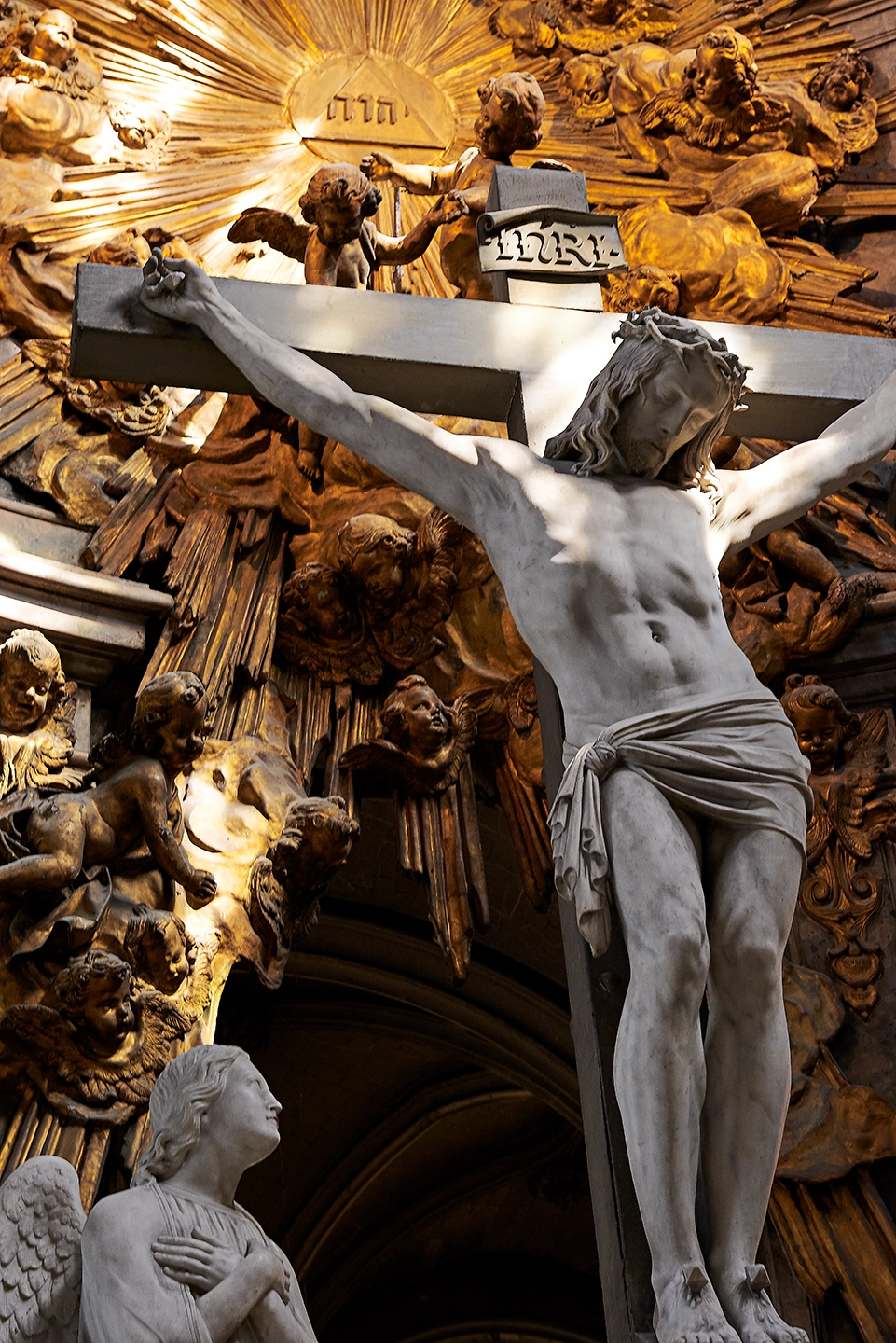
Fortunately for the tradition, 17 manuscripts
from Egyptian Philosophy in the Ptolemaic era resurfaced with the translations
by Marsilio Ficino (1433-1499) – the
inescapable luminary of the Italian Renaissance. Collected under the name of
the Corpus Hermeticum, these texts are
considered the foundational texts of Hermeticism; on the path of the sages,
their radiant philosophy acts as a natural prism and breaks down the light of
divine revelation into the following themes:
·
Order of the
cosmos
·
Unity (the
omniscience, omnipotence, and omnipresence of God)
·
The Sun
·
The Demiurge
·
Cohesion of
the spheres
·
Fusion of
opposites and polarity
·
The visible
and the invisible
·
Truth and the
illusion of our reality
·
Creation
through the circular setting in motion of unity
·
The Noos and
creative will
·
Time, space,
and matter
·
Body, soul,
and spirit
·
The good, the
beautiful, the right, and the just
·
Vices and
virtues
·
Creation is an
Art and the notion of harmony
·
The Ogdoad
·
Intelligence
and its relationship to the god-man
·
The 12/10 (or 6/5) ratio
·
The zodiac and
astrology
Obviously, the mention of astrology in this
list may seem utterly surprising, but you should know that, despite the fate
reserved for it today, the initiated magi of antiquity always considered it the
cornerstone of all their sciences. Along with magic and alchemy, this
esotericism brings together, under the term theurgy, the 3
operative paths of Hermetic philosophy. They form a harmonious and inseparable
whole. It is therefore unlikely that an alchemist could define themselves as
such without having been initiated into the magestria
of the other two disciplines.
The importance of this trinity was well
understood by the Greeks, as it is suggested in the name of the god associated
with the father of philosophers, the aptly named Hermes Trismegistus.
Indeed, alongside the commonly accepted translation of "Trismegistus"
as " the 3 times very great," one can quite easily, through
phonetics, propose another level of interpretation: "the 3 magestria ".
Even though the trinitarian doctrine of unity
has traversed time through the Pantheon of the Greek world, its historical
origin is indeed Egyptian. The splendor of this testament is found on the Giza
plateau, where the 3 pyramids remind the intellect of the
contemplator that the divine trinity is timeless, immortal, and indestructible.
How can one not be captivated by the majesty, grandeur, and genius of the
civilization that built them? The geometric, astronomical, and energetic
properties implicit in these volumes reveal to all eyes, but especially to
those who know how to see beyond appearances, the beauty of a thought that our
own has never matched.
Emerging from the dawn of time, the legacy of
this intelligence is also personified in the attributes of the messenger of the
Egyptian gods, Djehuty-Thot (tradition
has always delighted in comparing him to Hermes Trismegistus). The pen
of the late Jean Phaure (1928-2002) described Djehuty-Thot as follows: « He is the scribe of the
divine Ennead, the brush with which the god of the universe writes, the creator
of languages, the great magician of the spheres who presides over the original
creation to call the world into existence by the word, alongside Ptah. Above
all, he is the one who presides over the order of the world, the great
calculator, the master of the cycles of time. »
It is important to specify that in the
theogony of the Egyptians, Djehuty-Thot
was not considered a god in the literal sense of the term, but rather as a neter (phonetically very close to
"nature"); that is, the anthropomorphizing of a force, an action of
the divine immanence in the manifested world, a kind of hypostasis or an aeon, as the Gnostics liked to define it. One could not
be more charitable than by offering you the key that opens access to the 12 (3) verses
of the Emerald Tablet (Tabula Smaragdina in
Latin or Lawḥ al-zumurrudh
in Arabic), upon which the entire firmament of Hermetic philosophy is
synthesized. All occultists versed in the history of religions have developed a
passion for these writings engraved on an emerald – a green precious stone.
Depending on their culture and era, the most learned among them have produced a
slew of translations, more or less representative of the oldest recorded
version, written in Arabic in the 9th century: the appendix of the Book of the
Secret of Creation (Kitâb sirr al-Halîka). From the
viewpoint of tradition, the Arabic affiliation is not without meaning, since
the descendants of the Persians dislodged the Byzantines from Alexandria in the
7th century and became, by force of circumstance, the active vectors of the transmission of the
initiation.
Personally, I prefer Hortulain's 14th
century translation of the Latin Vulgate :
I.
It is true without lying,
certain and very true
II.
What is below, is what is
above: and what is above, is what is below, to work the miracles of one thing.
III.
And as all things have been,
and have come from one, through the
mediation of one: so all things have been born of this one thing, by adaptation.
IV.
The Sun is its father, the
Moon is its mother, the wind carries it in its womb; The earth is his nurse.
V.
The father of all the Telesme of everyone is here. His
Force or Power is whole,
VI.
If it is converted to land.
VII.
Thou shalt separate the earth
from the Fire, the subtle from the thick gently, with great industry.
VIII.
He ascends from earth to
heaven, and again he descends to earth, and he receives the Force of higher and lower things. Thou shalt have by this means
the glory of all; and for this all darkness will flee from you.
IX.
It is the strong force of all Force: for it will overcome every subtle
thing, and penetrate every solid thing.
X.
Thus, the world was created.
XI.
From this will come admirable
adaptations, the means of which is here.
XII.
That's why I was called
Hermes-Trismegistus, having the 3 parts of everyone's Philosophy.
What I have said of the operation of the
Sun is accomplished, & completed.
These verses have a curious resonance with the prologue to St.
John's Gospel, which is quoted below:
I.
In the beginning was the
Word (the Logos), and the Word was with God, and the Word was God
II.
The Word was with God in the
beginning.
III.
All things were created by
him, and apart from him not one thing was created that has been created.
IV.
In him was life, and the life
was the light of humanity;
V.
And The Light shines on in
the darkness, and the darkness did not overcome it.
VI.
A man came, sent from God,
whose name was John.
VII.
This one came for a witness,
in order that he could testify about The Light, so that all would
believe through him.
VIII.
hat one was not the light, but
came in order that he could testify about the light.
IX.
The Word was the
true Light, which enlightens every man by
coming into the world.
X.
He was in the world, through whom the world was made, but the
world did not recognize him.
Indeed, the similarities between the two
texts are more than striking. Consequently, the scribes of the Catholic Church
were likely inspired by the wisdom contained within the breath of the Hermetic
texts. In the creation of the "Holy Scriptures," the plagiarism of
earlier manuscripts by the Church Fathers is confirmed on two occasions. On the
one hand, the Gospel of John bears a striking resemblance to the Gnostic
Gospels of Cerinthus dating from the first century of the Christian era. On the
other hand, the Apocalypse ("apokalypsis"
translates from Latin as "revelation"), written by Saint John, is an
assemblage of a series of sacred texts, such as the Book of Enoch or the Book
of Ezekiel.
In a sense, the desire to incorporate
ancestral knowledge into the message of Christ's favorite apostle (always
depicted wearing a green cloak in iconography) indicates that Catholicism was
shaped from pre-existing doctrines. Furthermore, let us not forget that before
the invention of the printing press in the 15th century, falsifying a
manuscript was child's play; those thirsty for religious supremacy wielded this
practice with the success we know. For example, regarding the scriptures of the
Old Testament, all exegetes know that the Ten Commandments, supposedly
delivered to Moses by God on Mount Sinai, are merely a vulgar plagiarism of
paragraph 1:125 of the Egyptian Book of the Dead. Like it or not, Hebrew
theology, and Christian theology as well, is but a pale copy of the Gnostic
precepts of the neter with the single green
eye: Hor or Horus – the Egyptian light-bearer. There is nothing new
under the Sun; the Egyptians had also recycled earlier knowledge. This is why
the various biblical texts, the Pentateuch, and the canonical Gospels can never
be considered historical truths or indisputable theological references.
Nevertheless, even in its altered state,
sacred literature still holds many initiatory treasures worth examining
closely, for the theosophical syncretism found in all texts of a given culture
or civilization inevitably suggests a common origin, a kind of primordial
tradition as René Guénon liked to define it.
That said, let's return to the verses of the
Emerald Tablet.
•••••
In these
verses, what initially strikes our attention is the entirely novel principle
that a force ("the Word" in the prologue of Saint John) would be
linked to the creation of the world, the action of the Sun (symbol of light),
and the mediation of unity. This ancestral conception of the origin of matter
is remarkably close to the statement made by Max Planck, Nobel Prize winner in
Physics in 1919: « All matter originates and exists only by virtue of a
force which brings the particles of an atom to vibration and holds this most
minute solar system of the atom together. We must assume behind this force the
existence of a conscious and intelligent Mind. This Mind is the matrix of all
matter. » Realizing that the initiates of antiquity had already understood
what 20th century men are only just beginning to discover is nothing
short of staggering. And let us not be mistaken, it is indeed the existence of
God that is suggested by this luminary of the scientific community.
The
reality of fields that are inaccessible, indescribable, and immeasurable can no
longer be viewed as a sci-fi movie artifice or the ramblings of wisdom masters
from the Orient. By automatically referencing George Lucas's films whenever the
idea of a "force" is mentioned, our generation's culture does not
suspect that the description of the Force given by Master Yoda to his young
apprentice and future Jedi Knight, Luke, is in every way similar to that of the
tradition of the magi: « For my ally is the Force, and a powerful ally it
is. Life creates it, makes it grow. Its energy surrounds us and binds us.
Luminous beings are we, not this crude matter. You must feel the Force around
you; here, between you, me, the tree, the rock, everywhere. » To master the Force is to attain, as you
have guessed, the rank of knight... After long centuries of religious
ineptitude, adogmatic science and popular culture can
finally reconcile on the fertile ground of Gnostic clairvoyance.
Before we
continue, it is always good to know that the authors of Star Wars were erudite
Artists, for "Luc" comes from the Latin root "lucere" and the Proto-Indo-European "leuk", meaning "light,"
"clarity," or "radiant energy," and "Jedi" is a
phonetic borrowing from... Djehuty-Thot.
Thanks to these revelations about the Force,
which likens creation to the will of an intelligent consciousness or a
demiurge, the 12 (3) verses of the Emerald Tablet guide each person's
consciousness toward the primacy and accuracy of the vision of Hermes'
disciples. Where our peers limit themselves to a science of effects – the
material – our ancestors had already transcended the intelligible world and
focused directly on the cause of manifestation – the spiritual, beyond time and
space.
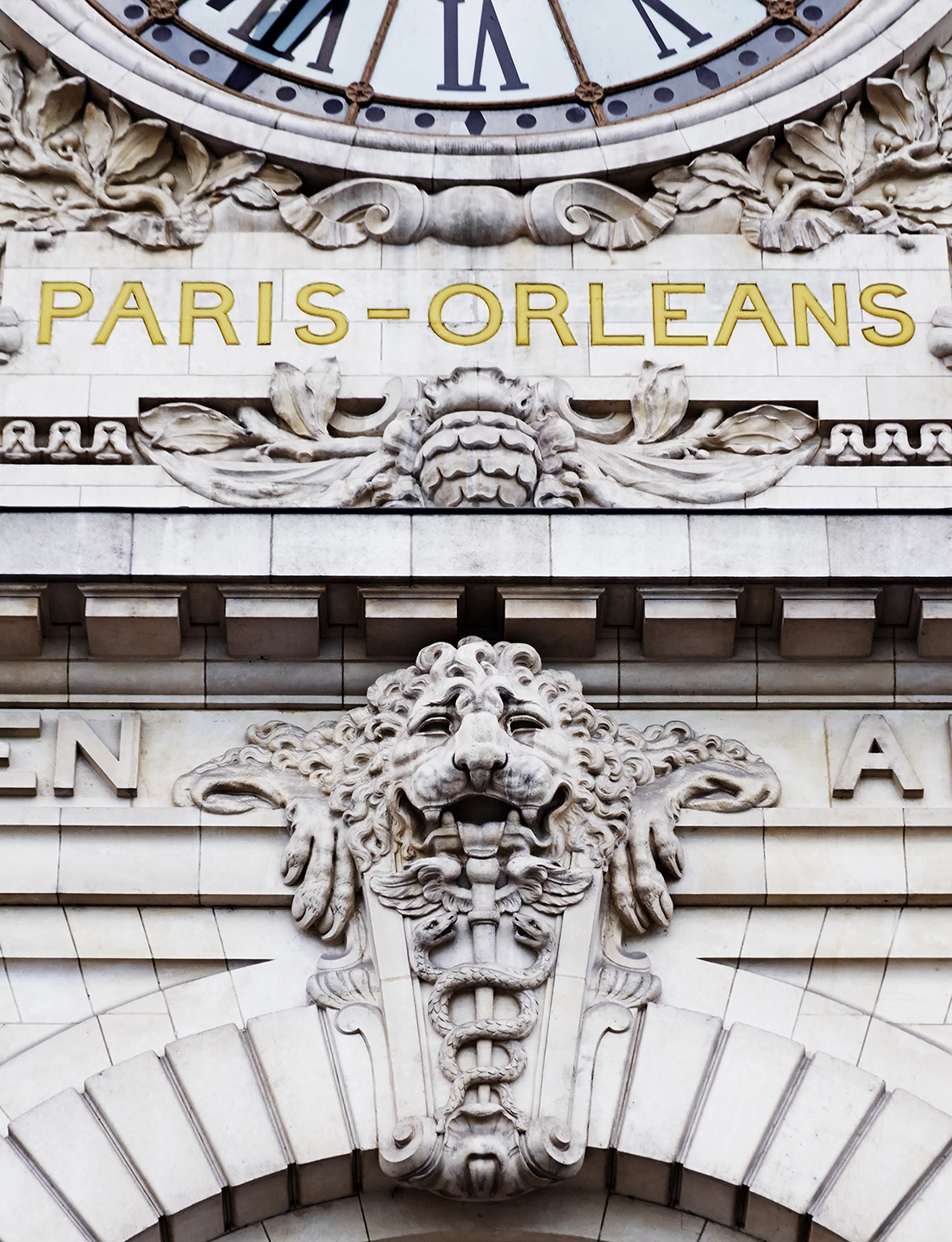
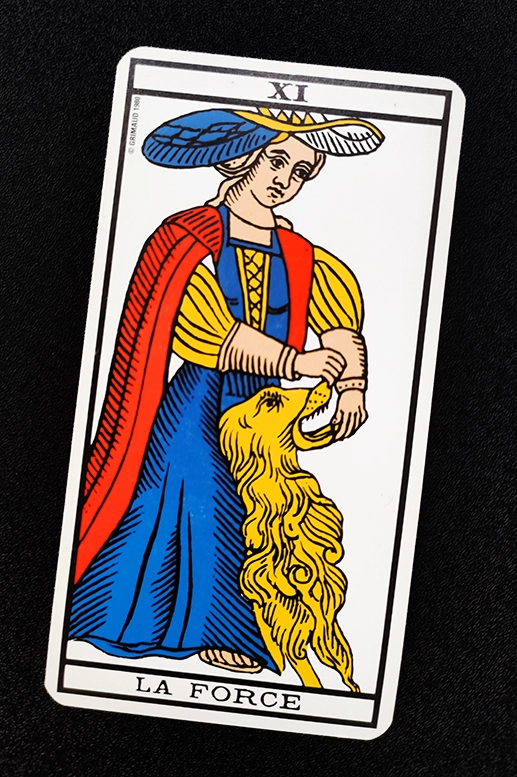
The adepts of Hermetic philosophy have always
compared the properties of the spiritual essence preceding matter to that of an
ocean, for its water fills the "void" ("vidyā
(विद्या)"
translates to "knowledge" in Sanskrit) as in any container. This
ocean echoes the cosmic sea of dark energy to which David Bohm alluded. Since
the homophone of "mer" (sea), "mère"
(mother), comes from "mater" in Latin, we can weave
interesting semantic links between "mer,"
"mère," "mercure"
(Mercury) (the avatar of Hermes Trismegistus among the Latins), "matière"
(matter), "matrice" (matrix/womb),
and "Marie" (Mary - which is an anagram of "aimer,"
"to love" in english).
If this invisible matrix is the origin of all
manifestation, the assumption that it is a virgin follows logically, and the
emblem of the Black Virgin (black, as opposed to the synthesis of the 6 colors
of the visible spectrum, expresses the absence of light), like that of the
Virgin Mary, then becomes more explicit from the angle of Theosophy, for the
Holy Virgin, the Queen Mother, "la mère divine" ("the
divine sea"), is
the ordinary figuration of the philosophers' mercury. Curiously, the anagram of
"énergie noire" ("dark energy") is "reine ignorée" ("ignored
queen"), which reminds us of the parable from verse 1:5 of the Song of
Songs, likely born from the love between King Solomon and the Queen of Sheba: « I
am black, but I am beautiful (...) ».
In the 12th century, in his work The Secret
Book dealing with the hidden art and the Philosopher's Stone, the alchemist
Artephius presented "l’eau des
sages" ("the water
of the wise") in this way: « Oh, how precious and
magnificent is this water! For without it, the work could not be perfected: thus it is named the vessel of nature, the belly, the
matrix, the receptacle of the tincture, the earth and its nurse, it is the
fountain in which the King and the Queen are washed, and the mother who must be
placed and sealed upon the belly of her child, who is the Sun. »
Do you begin to understand how the cabalists
deliberately obscured the trails leading back to the primordial ocean by using
a deliberately convoluted lexicon to define a single thing, namely, the unity
of matter – the materia prima ?
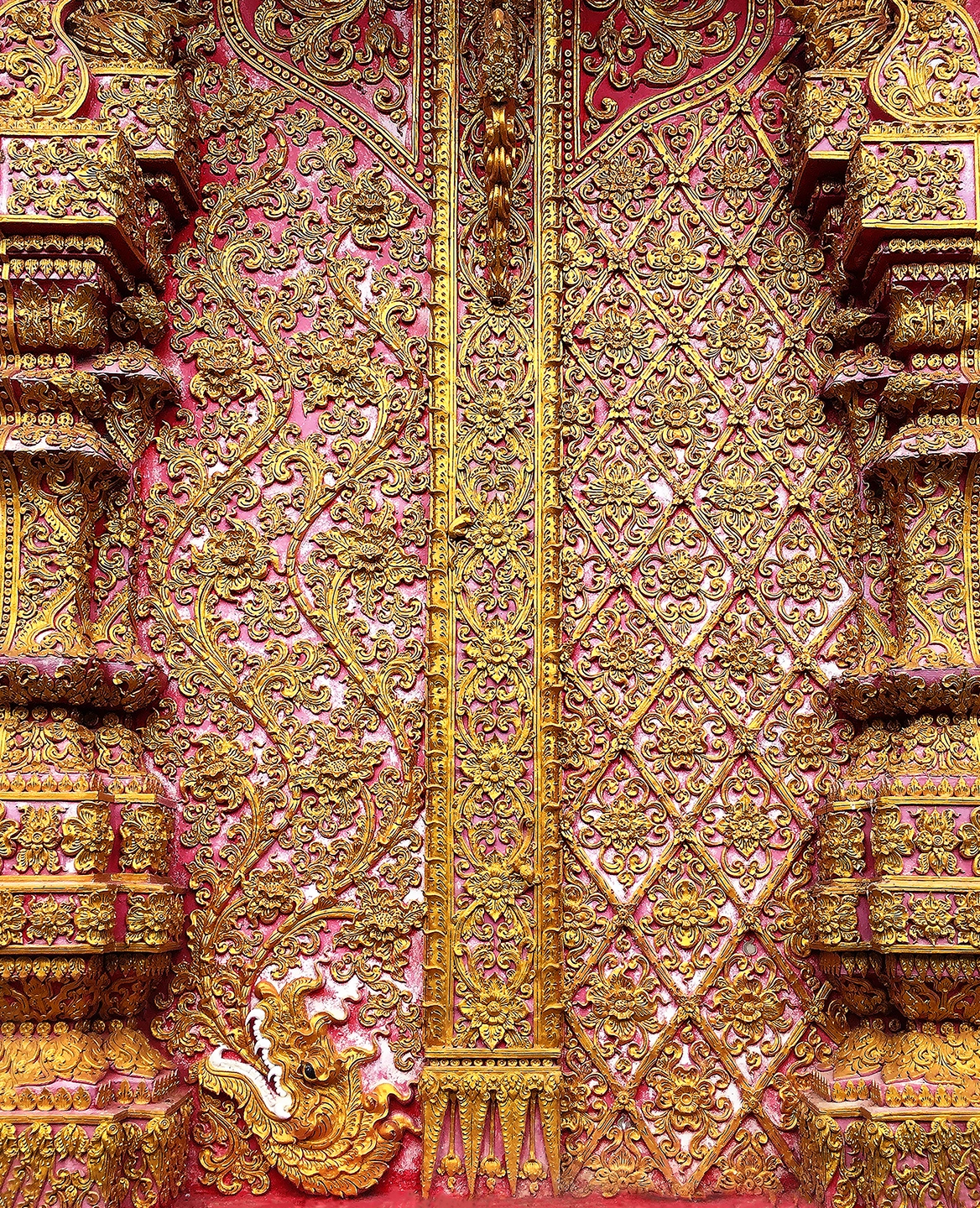
In the Corpus Hermeticum,
verse 16 of an excerpt from a discourse between Hermes and Tat states that: « All
that exists is in motion; non-being alone is immobile ». The unity,
the preliminary state to the divine manifestation, could thus be imagined as
energy in the form of standing waves, and when this energy is vectorized, the
whole is set in motion to create space, time, and, consequently, matter. The
universal matrix would be born from the rupture of the spatial equilibrium of
unity: this first impulse would be the strong force of all forces, its Spiritus
Mundi and its Holy Spirit ("Saint-Esprit" in French). This would be the passage from Ain Soph to
Ain Soph Aur in the Tree of Life of the Hebrew Qabbalah.
An experienced cabalist would break down the
word "Saint" from "Saint-Esprit" ("Holy
Spirit") into 3 parts: "s," "ain," and "t". The silent "t" is
the tracing of a cross, it expresses the center. "Ain" is the
principle preceding matter, which defines the "abyss" and
"non-existence" in Hebrew, and is heard as "un" ("one"),
the number of unity, and "s" is the letter
of manifestation, because it undulates like the graphic representation of a
pulsation. In other words, a Saint is a person whose vibratory signature
resonates with the first impulse emanating from the center of unity. This is
why the soul of a Saint – his spirit – will always be closest to the divine and
creative resonance of God.
The different states of matter could then be
compared to the rungs of a ladder, where the matrix Force crystallizes, or
gradually condenses, into more or less regular forms. This state of affairs is
supported by the best definition of alchemy you will find, that of Fulcanelli: «
Alchemy is the permutation of form by light, fire, or spirit. »
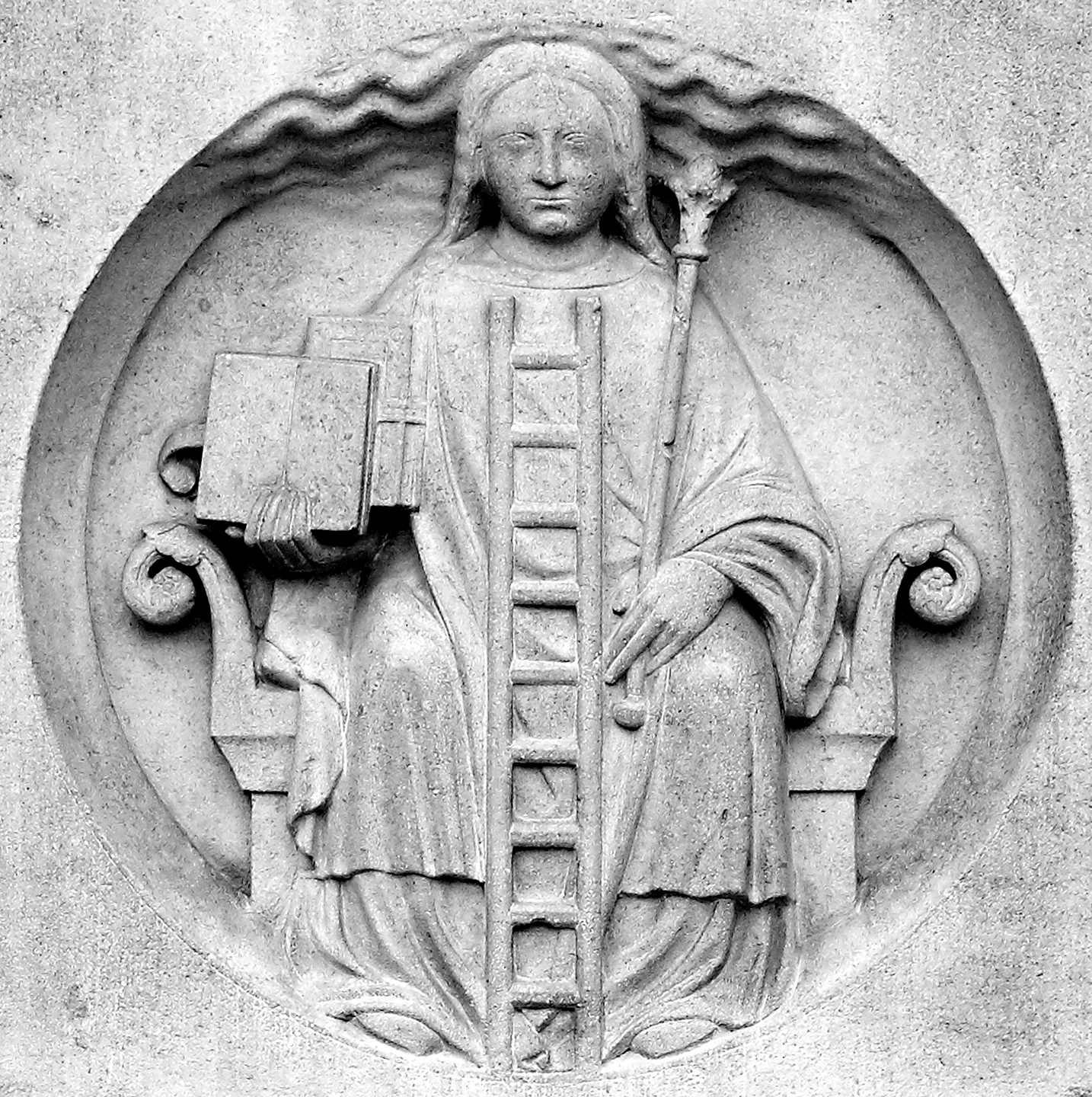
Even though, according to the testimony of Eirenaeus
Philalethes (1628-1665), metallic transmutation is a reality, it is
important to emphasize that making gold to enrich oneself was never the
ultimate goal of alchemy. Here again, many have gone astray by failing to
understand the cabalistic writings of our elders. To separate the pure from the
impure is to move from a base matter to a rectified matter. The simpler and
more ordered the molecular arrangements become, the more matter and the matrix
source gradually tend towards reunification, towards unity. Matter purifies
itself in a revolution inverse to the Luciferian fall ("Lucifer" is
"the light-bearer" in Latin, and he first appears in Greek mythology
as the guardian of the horses of the sun god Apollo), hence the
Nietzschean concept of the eternal return. The famous immortality, which
dreamers fantasize about so much, may ultimately be nothing more than the
search for eternity, for absolute stillness, where the eternal rests, closest
to unity.
The kingdom of the adepts' science is, by
definition, outside of time and space. Furthermore, unlike modern science,
which is exclusively concerned with matter, alchemy, magic, and astrology focus
directly on the matrix and the invisible laws that animate it.
·
Astrology
gauges the energetic variations of the celestial fire by observing the
influences of the stars and planets on the terrestrial world.
·
Alchemy
represents the manifestation of this fire in, ostensibly, inanimate organisms
(minerals and plants).
·
Magic directly
channels this fire into the body of the adept. The latter, as a mage in the
noble sense of the term, possesses perfect mastery of the cosmic fire. They
manage to transit this force through the chakras of their body in order to
modulate and redirect it according to the use they wish to make of it. If
divine love fills their heart, they will practice white magic, aiming to create
harmony and well-being. Conversely, if they allow themselves to be seduced by the
dark side, they will sink into black magic, using this force to sow division
and destruction.
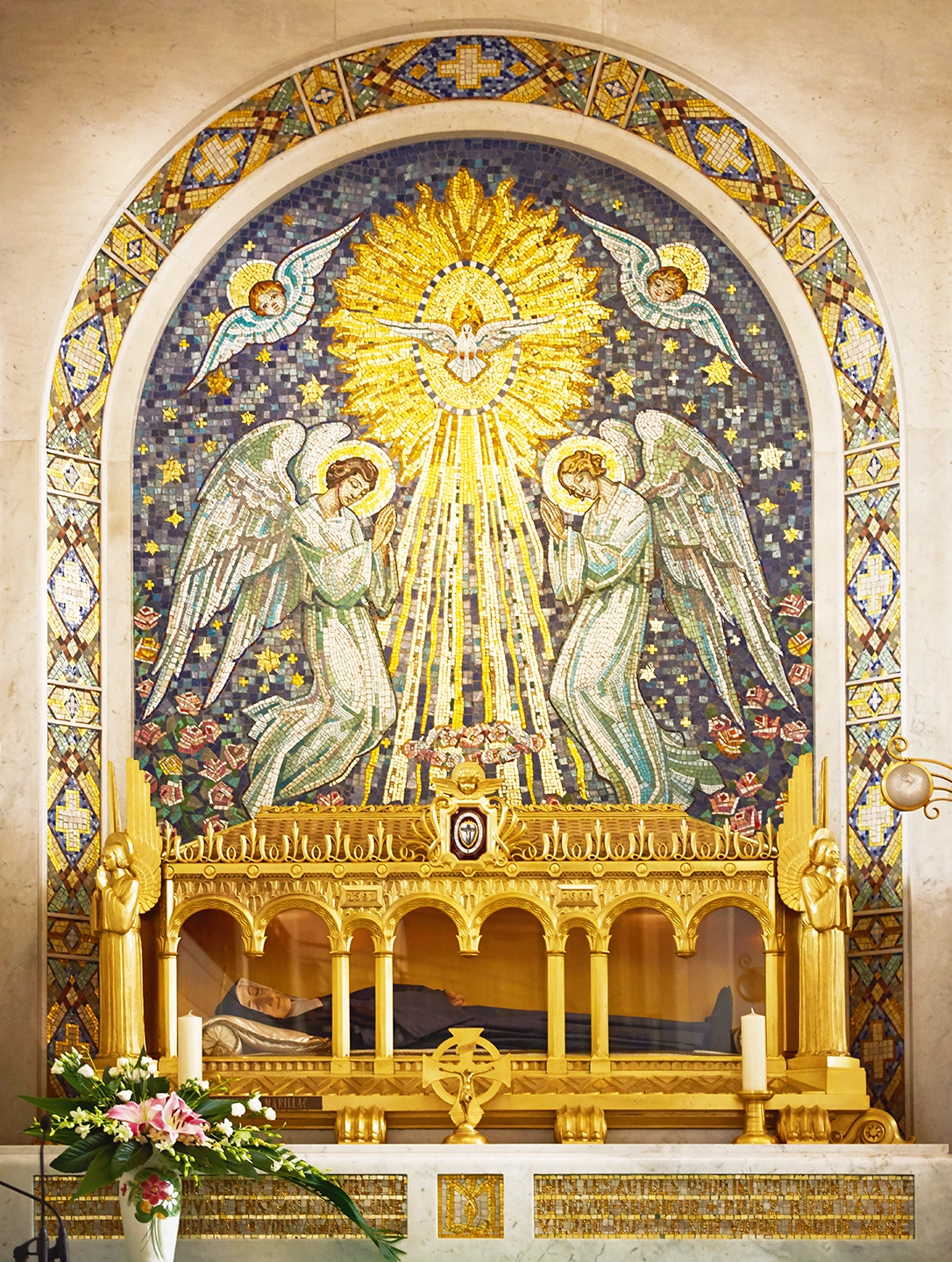
On the horizon of our reflections, it appears
that the driving principle of all existence – the force underlying life – is
generated by a matrix that finds its origin beyond the boundaries of our
reality. A deduction shared by Niels Bohr, Nobel Prize winner in physics, who
stated in 1922: « Everything we call real is made of things that cannot be regarded as
real ».
Therefore, if this creative Forece resides beyond the sensible and measurable field,
how is it possible to perceive its essence in the world accessible to men?
•••••
In my view, if this creative force is the
cause of tangible effects, its signature must necessarily be observable in
nature. It should therefore be possible to glimpse the mechanisms of this
matrix by adopting the mentality of an insatiably curious person, that is, by
opening one's eyes wide. To satisfy this will, specializing in one field or
another would be a grave error: the natural philosopher must open the field of
possibilities to all scientific domains, from astronomy to mineralogy – in
other words, to all phenomena visible between the heavens and the earth. The
imprint of the force must be present everywhere, and as the Emerald Tablet
suggests, in the infinitely large as well as the infinitely small. The work
consists of identifying its traces and then finding the analogies that link
them.
It was while working on this task in the 13th
century of the Christian era that the mathematician Leonardo Fibonacci noticed
an arithmetic sequence linked to generation in the biological world. In the
progression of this sequence, each new number is the sum of the two preceding
it: 0, 1, 1, 2, 3, 5, 8, 13, 21(3), 34, 55, 89, 144 (9)… and so on. The higher the numbers become,
the more the ratio between a number and the one preceding it tends towards a
mathematical constant with a value of 1.618. This ratio of proportion was
defined by the father of Greek geometry, Euclid, as the division of a segment
in extreme and mean ratio. This proportion, found in the phyllotaxis of the
plant world, appears to be a universal model, repeating invariably in all
creations of nature.

Thus, we observe spiral arrangements of this
numerical matrix in flowers, the Romanesco cauliflower, and the pine cone, but
also in the shells of nautiluses and gastropods. These analogies are utterly
astonishing because they are not limited to these few examples; they find a
universal echo in the 3 kingdoms of the living world: the mineral,
the vegetable, and the animal. Nature does geometry, automatically, without a
square or a compass. Nature does not need a blueprint; it is the blueprint. Its
architecture, especially when expressed in a helical ("helical" and
"helix" share the same etymological root as Helios, the Sun god of
the Greeks) and logarithmic manner, is simply dazzling. I will never understand
why most of us remain stoic in the face of so much beauty and elegance. Do they
not have eyes to see?
Since the 20th century and the work of Matila
Ghyka, the ratio equal to 1.618 has been known as the "nombre d’or" ("golden number"). Using
this designation would, however, be a gross error, for a proportion is not a
number but a relationship between two numbers, in their arithmetic or geometric
expression. It is therefore preferable to use "golden ratio" instead
of "golden number".
The etymology of "or" ("gold")
comes from "aor," "aour,"
"aur," or "our" in Semitic languages, all of which
translate to "light." Recalling the prologue of the Gospel of Saint
John, where it is written: « The Word was God (...) The Word was the true
light », the
correlation between God, the Word, light, and the golden ratio becomes more
than evident for one of the modes of thinking among the magi: synonymic
reasoning. If you were looking for concrete proof of God's existence, the
golden ratio would give your argument a factual dimension that would be
difficult to refute. Especially since the Greek symbol for the golden ratio, Φ, defined for the early worshippers of Christ
as "the force of God," "the Will" ("the Telesme" of the Emerald Tablet), or the principle of
the concentration of spirit in matter.
The signature of Φ is also manifested in human anatomy. Among
the multitude of examples, we could cite the case of the navel is the most
significant. Indeed, knowing that the word "nombril" ("the
navel") is the phonetic equivalent of "nombreel" ,
cabalists would break it down into "nombre"
("number") and "El" to find its substantive
marrow. Since El is the name of God at the origins of humanity, this
point, so special in the context of the Vitruvian Man, is the physical
revelation of the divine signature in the proportions of the human body. On the
one hand, it is from here that the nourishing energy of the mother was
instilled in us; on the other hand, and this is what interests us here, it on
average divides the distance between the feet and the head by the golden ratio.
The verse 1:27 of Genesis which states that «
man was built in the image of God » is therefore not a parable; it
must be understood literally, at face value.
The Larousse dictionary explains that: « Φ is the 21st letter of the Greek alphabet (21(3) = 3 x 7),
corresponding, in ancient Greek, to an aspirated " p " and, in modern
Greek, to an " f ". It is transliterated as " ph " in French words derived from Greek ». The
first syllable of the words "philosophy," "physics,"
"phyllotaxy," "firmament," "force," and
"fire" underscores the intimate relationship these words have with
the golden ratio. Etymology is a science to be handled with the utmost
seriousness because, as you have previously observed, the investigative keys
offered by this tool are unparalleled.
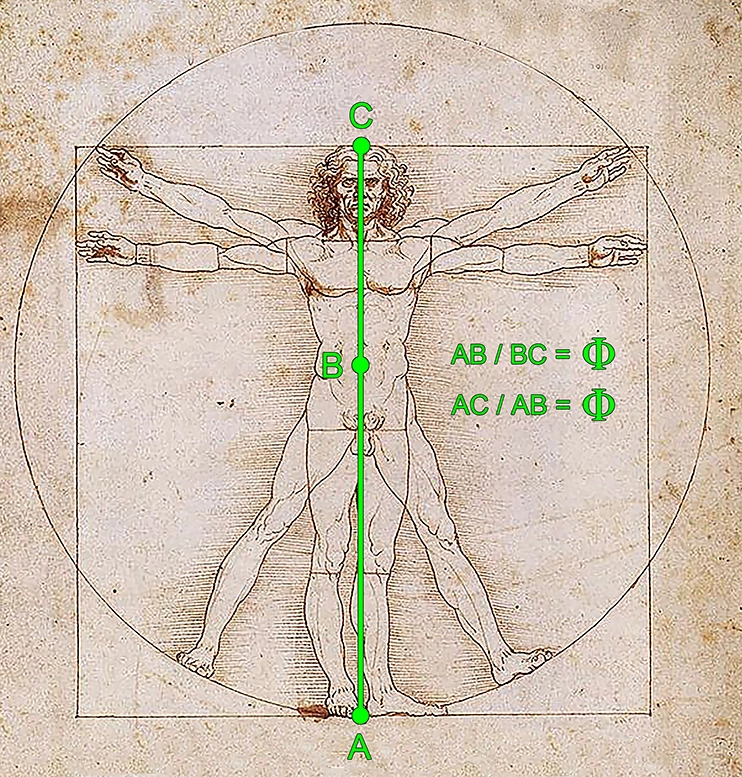
Faced with all
these sympathies, it seems to me not overly presumptuous to assert that Φ, the true swirling pivot of universal harmony (to
be heard as "uni vers El" ("united toward El ") or "uni ver sel," meaning "united green salt" in a
right-to-left reading, is the organic imprint of a creative matrix, whose
structure is subject to the laws of geometry and arithmetic. Plato understood
this very well, as he declared: « God
always geometrizes. » and « Geometry draws the soul toward truth and creates
the spirit of philosophy, forcing the soul to turn its gaze upward instead of
downward. »
For their part, historians recount that the
golden ratio was named "phi" to honor the sculptor Phidias (480-430 BC), famous for his
participation in the construction of the Parthenon in Athens, where the
precious ratio is exalted in the proportions of the facade. Should we be
astounded by the fact that the golden ratio was already used five centuries
before the Christian era by Greek architects, and also, according to the work
of René Adolphe Schwaller de Lubicz (1887-1961), by their Egyptian
counterparts? Absolutely not, because all Artists, worthy of the capital A,
have always tried to make their works resonate with this particular signature.
In their desire
to mimic ("singer" in French, to be heard "saint G" ("holy G"), they attributed to Φ the ultimate canon of beauty. Every time Φ is used, it is a syncretic tribute to nature
and the creator that is celebrated. From the grandiose pyramids of the Giza
plateau to the abstract paintings of Kandinsky, Φ has always been the prerogative of Artistic
genius and the mark of a symbiotic relationship with the universe. This form of
expression was undoubtedly born from a necessity: to reveal and glorify the
invisible intelligence of divine creation in the material world.
•••••
No offense to our
contemporaries, the Art before the 20th century had nothing in
common with the "works" of today. The word "art" has
unwittingly become a catch-all term into which any kind of creation can find
its place. One only needs to frequent art galleries to realize that
"art" has become an intellectual masquerade and a visual pollution on
which ill-intentioned people or charlatans try to make their fortune. In 1973,
Jean Phaure already described this trend with the
objectivity it deserved: « Modern
art is a black magic, sometimes in the most operative sense of the term, and
has the eschatological function, like psychoanalysis, of placing back into the
field of our consciousness our infra-psychism, populated by all the psychic and
demonic residues that in the previous phases of the cycle had been contained in
those cellars by sacred art, religions, and initiatory knowledge. »
No need to hold a doctorate in art history to
realize that creativity is, compared to the achievements of our past, the
victim of a deliberate process of destruction. Indeed, how can one place the
paintings of Jackson Pollock (1912-1956) on the
same pedestal as those of Michelangelo (1475-1564), Raphael (1483-1520), or Botticelli (1445-1510)? Unfortunately for
humankind, this enforced form of intellectual terrorism is not confined to the
borders of art, but corrupts all the pillars upon which the liberation of a
healthy and balanced society rests.
To this, it must
be added that a person's creativity does not automatically make them an Artist.
The masters are formal and are always there to testify: one does not become an
Artist overnight; perfecting one's Art requires a great deal of work and constant
spiritual asceticism. Without having undergone the purification and
rectification of one's soul – demonstrating holiness – it is practically
impossible to receive divine inspiration, to resonate with the force, and to
become one with the grace of its quintessence to produce anything. Leonardo da
Vinci (1452-1519) drives the nail even deeper into the flesh of the
aspirants, who are often untalented, by suggesting that the qualification of
Artist is indeed only earned in high places: « The artist, constantly occupied with contemplating creation, renders
a perpetual homage to the creator. Our so patient study of the divine work
demands more effort than singing matins. »
Art thus implies a
fusional relationship with the sacred, and in this sense, it must be a
reflection of the matrix space. To achieve this, every detail must be
thoroughly considered, measured, and weighed. Absolutely no element can be the
product of chance. And as Jean Phaure pointed out,
this type of work is the antithesis of spontaneous art: arithmetic proportions
and regulating geometric lines organize a harmonious and resonant composition,
the choice of colors aligns with the symbolism of the figures and volumes, and
mythological and religious archetypes blend with all kinds of cabalistic
references. And of course, never forget the hermetic character of the form,
that is, as the tradition's adage stipulates: « to show, to signify, and to hide... all at
once ». The divine does not show... it suggests!

In the superior magma of the creative spirit,
and since it is often considered the cornerstone of all Arts, architecture
occupies a privileged place in the relationship it maintains with natural
elements. The synchronization between a temple's properties and temporal cycles
has always been one of the best-kept secrets by the initiatory high spheres of
priestly castes. It is in the resolution of the squaring of the circle that the
edifice is elevated towards the sacred, thus asserting its operative function
by conjugating celestial and terrestrial energies within itself. When a temple is
built according to the rules of Art, its geometric shape gives the space its
orientation, and, like a needle on a sundial, it also gives the measure of
time. In this, the scientific knowledge of cosmic cycles elevates the Architect
to the rank of initiates, and, for this purpose, it cannot be otherwise.
Unfortunately for Humanity, few people truly
understand the encoding systems used in the Artworks of our ancestors. And even
if their attempts are successful, the academic doxa automatically labels them
as gentle visionaries. This label further justifies the modern approach to the
Arts through the prism of psychology, for one must attempt to provide an
explanation, even a fantastical one, for the allegories, metaphors, and
parables of the traditional culture of our masters. Be that as it may, we will
try to decipher a few works for what they really were throughout this thesis.
With this in mind, the best way to tackle this is to use the tools that have
been bequeathed to us, and in this virtuosity, the measure of the Liberal Arts
is essential.
The
Liberal Arts number 7 and are divided into two paths: the Trivium and
the Quadrivium.
·
The Trivium
is defined by the expression of the Word (the Light) through words. It is
divided into 3 subjects: grammar, dialectic, and rhetoric.
·
The
Quadrivium relates to the powers of numbers, that is, the expression of the
Word through mathematics, and is divided into 4 subjects: arithmetic, music,
geometry, and astronomy.
Alongside these 7 paths, a linguistic axiom
from the Hermetic Cabale, called the Language of the Birds (the Green Language),
completes the already well-stocked palette of the Artist. This slang, qualified
as solar, whose principles are sanctified in the appearance of its initiator
with the head of an ibis, Djehuty-Thot,
is based exclusively on the assonance of words, without ever taking into
account the rules of spelling and grammar. Richard Khaitzine (1947-2013) spoke of it in this way:
« This language of the birds is the one revealed by Jesus to the apostles
through his spirit, the Holy Spirit. Remember that episode from the Gospels. It
is the period of Pentecost and the apostles receive the gift of tongues in the
form of tongues of fire, fire being a synonym for spirit. But in that case, you
might ask, why is it called the language of the birds? Because the Holy Spirit,
of a volatile nature, is frequently symbolized by a bird, often a dove.
»
In order to compensate for the weaknesses of
language and to provide the final keys essential for opening the closed kingdom
of the magi, the disciple of Hermes will use another vector of transmission,
still very poorly understood today: the symbol.
•••••
The symbol plays a more than singular role:
stimulating only the psyche, this figurative sign connects man to his
imagination and links his thought to spheres indescribable by words. Indeed,
the sound of a word is a vibration that the ear can hear, and, in this state,
it already possesses a material manifestation. The word therefore clumsily cuts
the dynamics of the idea it wishes to define; it is precisely to remedy this
weakness that the use of the symbol demonstrates its full effectiveness. By
creating a bridge between the created and the uncreated, this mode of reading
gives the mind the possibility to traverse the mirror of appearances, to
glimpse the other side of the set, outside of space and time. Ferdinand
Brunetière (1849-1906) specified:
« The
symbol is an image, it is thought... It allows us to grasp between the world
and ourselves some of those secret affinities and obscure laws which may well
exceed the reach of science, but which are no less certain for that, every
symbol is in this sense a kind of revelation. »
We could not continue this introduction
without honoring the sharp verb of René Guénon (1886-1951), because his life and
work alone crystallize a spiritual search without any concession. He wrote in
his book Symbols of Sacred Science: «
We have already had occasion to speak of the importance of the symbolic form in
the transmission of doctrinal teachings of a traditional order (...) Why does
one encounter so much more or less avowed hostility towards symbolism?
Assuredly, because it is a mode of expression that has become entirely foreign
to the modern mentality, and because man is naturally inclined to distrust what
he does not understand. Symbolism is the means best adapted to the teaching of
truths of a superior order, religious and metaphysical, that is to say, of all
that the modern spirit rejects or neglects; it is the very opposite of what
suits rationalism, and all its adversaries behave, some without knowing it, as
true rationalists (...) It is thus that the highest truths, which would not be
communicable or transmissible by any other means, become so to a certain point
when they are, so to speak, incorporated into symbols which will doubtless
conceal them for many, but which will manifest them in all their brilliance to
the eyes of those who know how to see (...) If the Word is thought on the
inside and speech on the outside, if the world is the effect of the divine Word
uttered at the origin of time, the whole of nature can be taken as a symbol of
the supernatural reality. Everything that is, in whatever mode, having its
principle in the divine intellect, translates or represents this principle in
its own way and according to its order of existence; and, thus, from one order
to another, all things are linked and correspond to contribute to the universal
and total harmony, which is like a reflection of the divine Trinity itself.
This correspondence is the true foundation of symbolism and that is why the
laws of an inferior domain can always be taken to symbolize the realities of a
superior order, where they have their profound reason, which is at once their
principle and their end. »
In its vulgar figuration,
the "saint bol" ("holy cup") takes the form of a cup or a chalice. During the magical
ritual of the Mass, at the moment of the Eucharistic sacrament, it collects the
Christic blood – the metaphorical liquid of the
cosmic fluid. The evocation of an aqueous essence inevitably recalls the way the
disciple of Hermes associated the behavior of the mercurial spirit with a
primordial ocean. Following analogical reasoning, the symbol fulfills exactly
the same function as its homophone, revealed by the language of the birds,
namely that the "saint bol" ("holy cup") is the receptacle and the revealer in the tangible world
of the ineffable principles of the universal matrix.
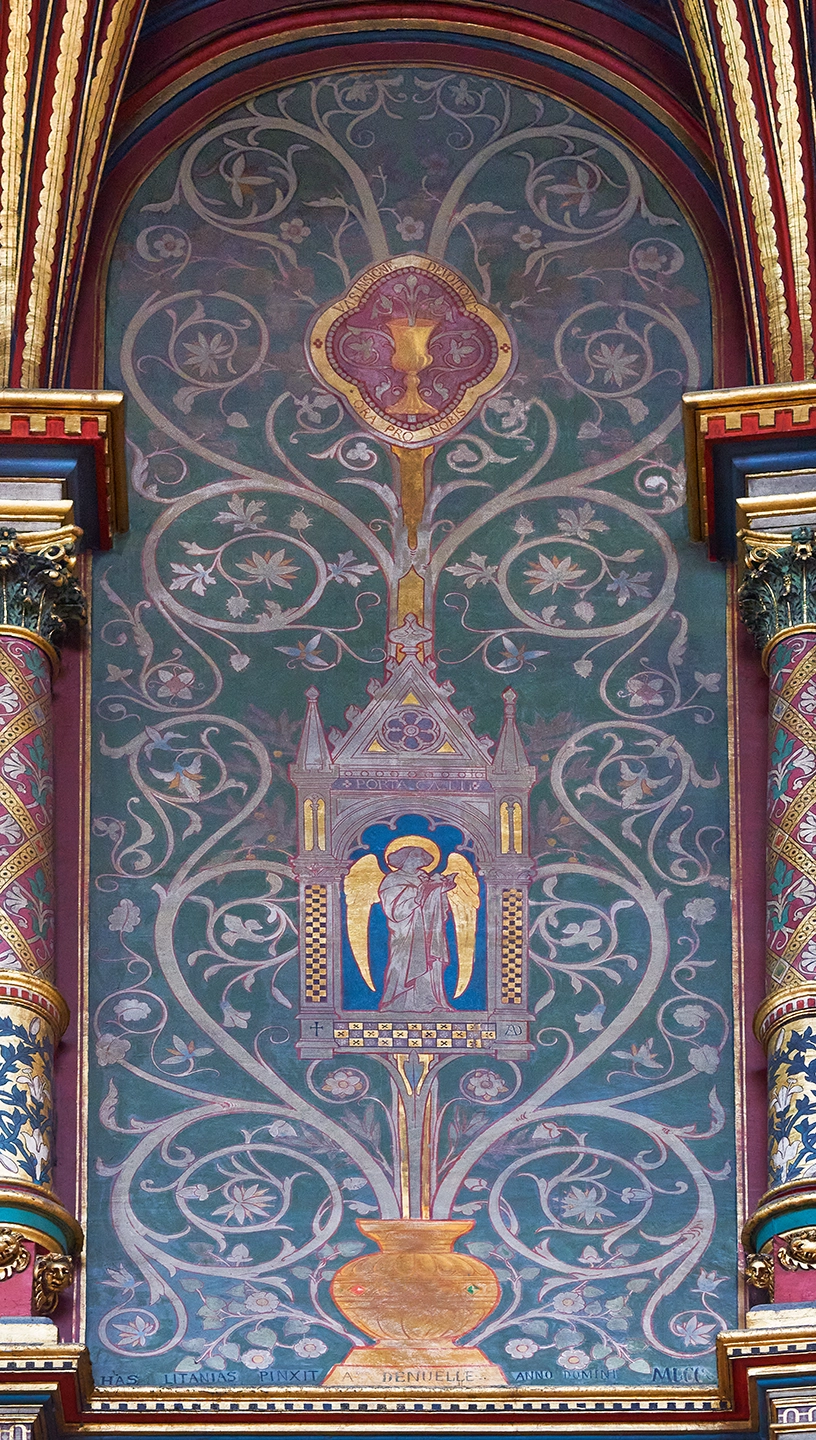
I understand that
for most of you, the Hermetic tradition seems very mysterious, even chimerical,
especially since this philosophical current proposes historical and scientific
perspectives that the dominant thinking qualifies as irrational. I can already
hear the rhetoric of the most indoctrinated: « How could ancient man have known what modern science is only
beginning to glimpse? Are we not superior to those hicks of the
past? »
Indeed, and whatever he may think, modern man
is unaware of his own ignorance. But we must not cast stones at him, for from
the benches of kindergarten to the lecture halls of universities, he is
encouraged to naively repeat what he is taught. And since the majority has
grown up in the same system, it is logical that "normal" people are
all molded in the same way. In his defense, it must be recognized that the
pursuit of knowledge, intellectual and cultural enrichment, is an activity that
is no longer valued. Absolutely nothing is organized to encourage us to read
the works in libraries and to multiply our general knowledge. This sad
observation is the inexorable consequence of a state-controlled education
constantly leveled downward, the propagation and normalization of a culture of
the artificial (to the detriment of the natural), the promotion and
standardization of mediocrity by the dominant media, the stupefaction and
hypnotic manipulation of the masses by television. And above all, the
ever-growing denial of a transcendent and salvific spiritual kingdom. It's a
fact; we can no longer count the friends who are very proud of their
agnosticism... How
sad!
At the dawn of the 21st century,
the collapse of thought mirrors the decadence, degeneration, and decline of our
civilization. This intellectual sclerosis has become an increasingly thorny
obstacle for those who take the paths of spiritual evolution, personal
emancipation, or the Gnostic path. Social conditioning is so powerful that the
intrepid, those who still dare to think for themselves, are often ostracized
and unfortunately subject to mockery. It takes tremendous strength of character
to free oneself from public condemnation and the judgment of others. This work
requires a deep and delicate introspection upon oneself; very few people are
prepared to suffer in order to dissolve the illusions of daily life so as to be
completely freed from them. To be able to empty one's chalice of all dross, and
then refill it with a more radiant light, is an achievement inaccessible to
most of us.
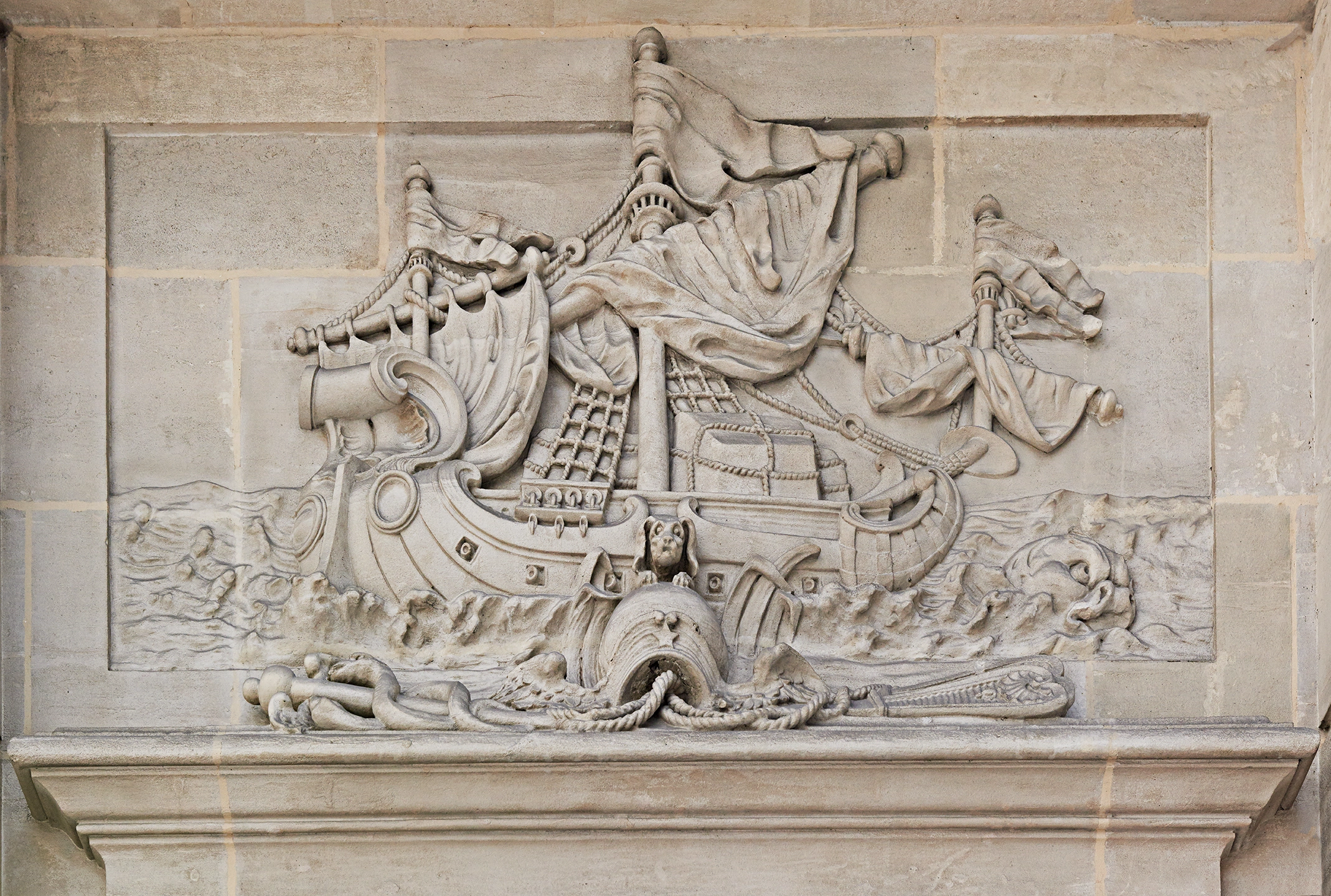
Prudence, temperance, fortitude, and justice
are the cardinal virtues necessary for the opening of the kingdom of God. If
perseverance is our loyal servant on the path of truth, the vertical essence of
the solar fire will illuminate our hearts, and the undertaken work will always
be crowned with success. Without this spiritual quest, I probably would never
have found the courage to share these few lines with you, because the
metaphysical currents upon which the winds of this demonstration will carry us
are ridiculed by the orthodoxy of the educational system and are very poorly
understood by today's globalized culture. This thesis could never have become
an original stone added to the edifice if our usual prejudices had not been
overcome, if the lands of the unexplored had not been pushed back, and if our
reality had not been transcended.
To achieve this, the scientific and syncretic
study of the principal religious symbols is the major axis – its axis mundi
– around which this thesis will evolve. Like a modern Jason in quest of the
Golden Fleece, guided by the clarity of the pole star, we will navigate the
most mystical and unimaginable vibratory oceans. I therefore invite you to
explore sacred science aboard my vessel, to lift the veil on the naturing
nature of the Holy Spirit, and to cast off towards the most absolute mystery of
all: the creation of space-time.
Ludovic
Nicolas